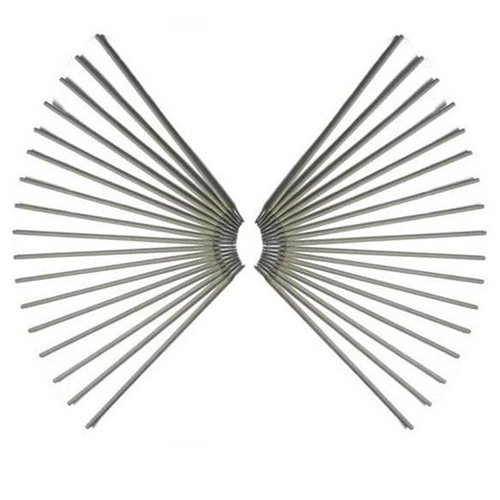CHARACTERISTICS & APPLICATIONS
ímet-8018C4(H4R) are low-hydrogen iron powder potassium electrodes that have been designed to produce weld metal with increased strength without being air-hardenable or with increased notch toughness at temperatures as low as –50°C. They have been specified with nickel contents which fall into nominal levels of 1.5% Ni in steel.
With carbon levels of up to 0.10%, strength increases and permits these Ni steel electrodes to be classified as E8018-C4 [E5518- C4]. However, low-temperature toughness improves to match the base-metal properties of nickel steels, such as A516 Grade 60, 65, or 70, A537 Class 1 or 2 (UNS Nr K02100, K02403, K02700, K12437) classifications.
For many applications, nickel steel weld metal can be used without post weld heat treatment. PWHT is not specified for this class, so the holding temperature should not exceed the maximum temperature given for the classification since nickel steels can be embrittled at higher temperatures.
Storage and Drying Conditions: Not recommended | Ambient temperature (For R-Class)
Hydrogen can have adverse effects on welds in some steels under certain conditions. One source of this hydrogen is moisture in the electrode coverings. For this reason, the proper storage, treatment, and handling of electrodes are necessary.
Holding Ovens: 125°C–150°C Drying Conditions: 250°C–425°C
CHEMICAL COMPOSITION OF UNDILUTED WELD
|
C |
Mn | Si | P | S | Ni | Cr | Mo |
Additional Elements |
|
0.10 |
1.25 | 0.80 | 0.03 | 0.03 | 1.10-2.00 | NS | NS |
NS |
Single values are maxima, except where specified otherwise.
ALL-WELD-METAL MECHANICAL PROPERTIES (AW)
Preheat and Interpass :95-120°C | Post weld Heat Treatment: NS (Post weld heat treatment is not required for this classification.)
|
Tensile Strength, MPa |
Yield Strength, At 0.2% Offset, MPa | Elongation % |
Charpy V-Notch Impact at -50°C, Joules |
|
550 |
460 | 19 |
27 |
Single values are minimal.
Impact test specimens are tested without thermal treatment.
Limit of Moisture Content, % by weight max: 0.20 max (Reconditioned) | 0.40 (As Exposed) for H4 version Diffusible Hydrogen Content Average, Maximum, mL(H2)/100 g Deposited Metal: 4.00
Welding Considerations
Preheat and interpass minimum temperatures also have a significant effect on the strength levels attained with certain low-alloy steel weld metals. These weld metals are affected by rapid cooling rates which tend to produce more martensitic or bainitic microstructures. These microstructures will often exhibit higher yield and tensile strengths with a decrease in ductility.
The cooling rate can be retarded by utilizing a higher preheat and interpass temperature. The preheat and interpass temperature ranges given herein are adequate for the preparation of the test assemblies.
However, in actual production, users are encouraged to test their own procedures to verify that they have selected preheat and interpass temperatures which will produce desirable results in production.
Due to the thick covering and deep cup produced at the arcing end of the electrode, iron powder electrodes can be used very effectively with a “drag” technique. This technique consists of keeping the electrode covering in contact with the work piece at all times, which makes for easy handling. However, a technique using a short arc length is preferable if the 2.5 mm or 3.2 mm electrodes are to be used in other than flat or horizontal fillet welding positions or for making groove welds.
SIZES & CURRENT CONDITIONS (AC or DCEP)
|
DIAMETER, mm |
LENGTH, mm |
Amperes |
|
2.50 |
350 | 70-100 |
| 3.15, 3.20 | 350 |
115-155 |
|
4.00 |
350, 450 | 135-185 |
| 5.00 | 450 |
200-275 |
NOTE: H4 R variant is available for supply on request.
WARNING: Safety and health information is available from many sources, including, but not limited to Safety and Health Fact Sheets listed in A11.3, ANSI Z49.1 Safety in Welding, Cutting, and Allied Processes published by the American Welding Society, 8669 Doral Blvd., Suite 130, Doral, FL 33166., and applicable federal and state regulations. The Safety and Health Fact Sheets are revised, and additional sheets added periodically.

